A portion of the mural adorning the wall on the Mexican side of Friendship Park, which runs along the U.S.-Mexican border. Photo: Jaylim Aboneaaj
Wintersession 2020 and the view from the borderlands
Students in an immersive American studies course offered during Brown's Wintersession witnessed firsthand the complex cultural dynamics at the U.S-Mexico border.
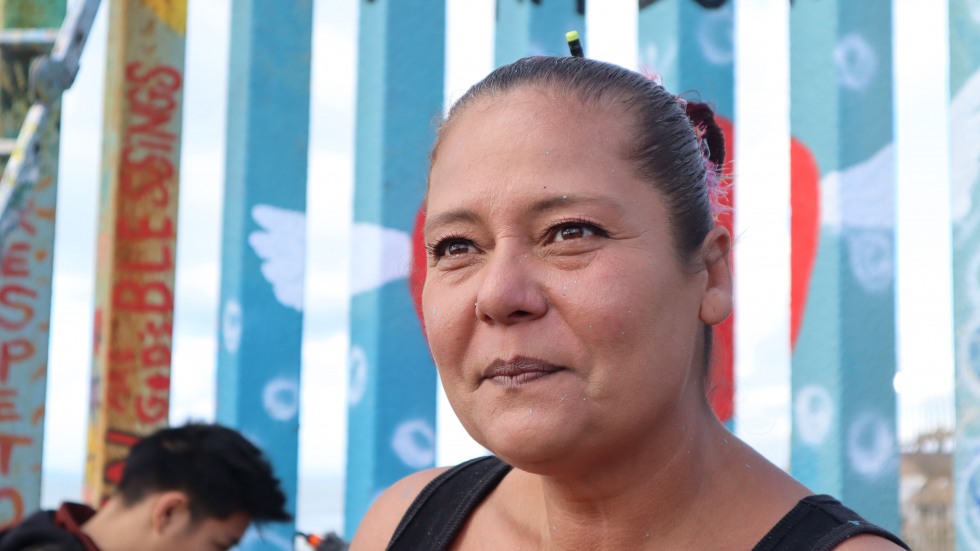
An artist and activist poses before one of her border wall murals on the Mexican side of Friendship Park. Photo: Zeinab Kante
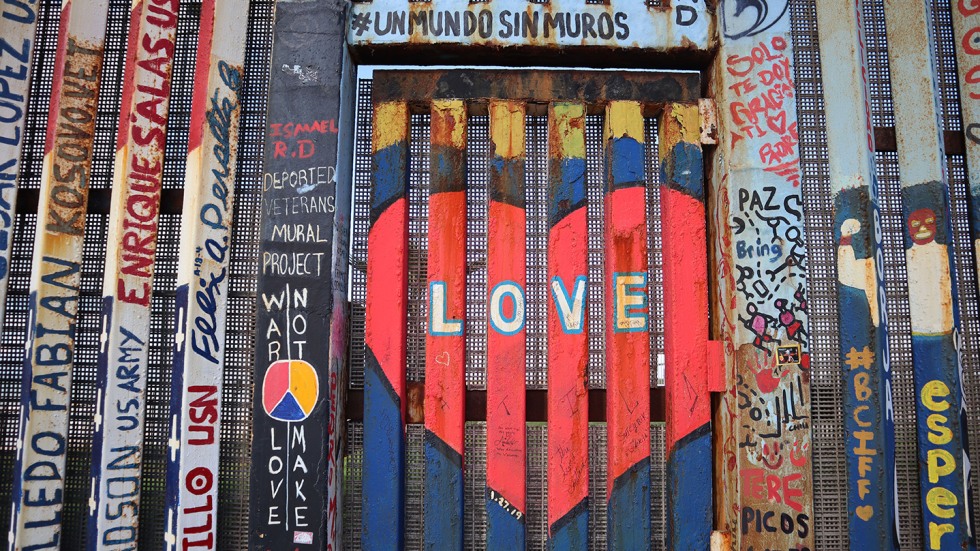
A painted portion of the border wall on the Mexican side of Friendship Park. Photo: Zeinab Kante
PROVIDENCE, R.I. [Brown University] — By the time the 12 students in the U.S.-Mexico Border and Borderlands, a Wintersession 2020 course at Brown University, arrived at the westernmost corner of the U.S-Mexico border, they had read and discussed over 1,000 pages on the history of the borderlands.
But none of those readings quite prepared them for what they experienced as they traveled along the roughly 110-mile border between San Diego County, California, and the Mexican cities of Tijuana and Mexicali.
"The Mexican side of the border was so vibrant," said senior political science concentrator Ijahala Pottinger. "The wall was covered with bright murals, and there were people everywhere. But the U.S. side was so militarized. It surprised me how much life and love were on the Mexican side of the wall, compared to the desolation on the U.S. side."
For Kris Cho, a sophomore ethnic studies concentrator, this contrast provoked a revealing comparison. Like the wall dividing San Diego County from Western Mexico, the Berlin Wall that divided Germany from 1961 to 1989 looked starkly different depending on what side of it you were on. But it was the democratic western side of the wall — the side that came to symbolize freedom — that bore bright artwork, while the communist eastern side remained unadorned grey concrete.
"When you learn about the Berlin Wall, the wall’s own appearance reinforces who we see as the good guy and who we see as the bad guy," Cho said. “But when we see this wall on our own frontier, there’s an element of hypocrisy. We identify ourselves with freedom, but the side that has all the vibrancy — that’s the Mexican side."
The marked difference that the students in history, American studies and ethnic studies professor Evelyn Hu-DeHart’s course saw between the U.S. and Mexican sides of the border — and the questions this difference raised about the nature of the stories told about it — became a touchstone for the class’s 10-day immersion into the complex cultural dynamics that animate the U.S.-Mexico borderlands.
Stories from the borderland
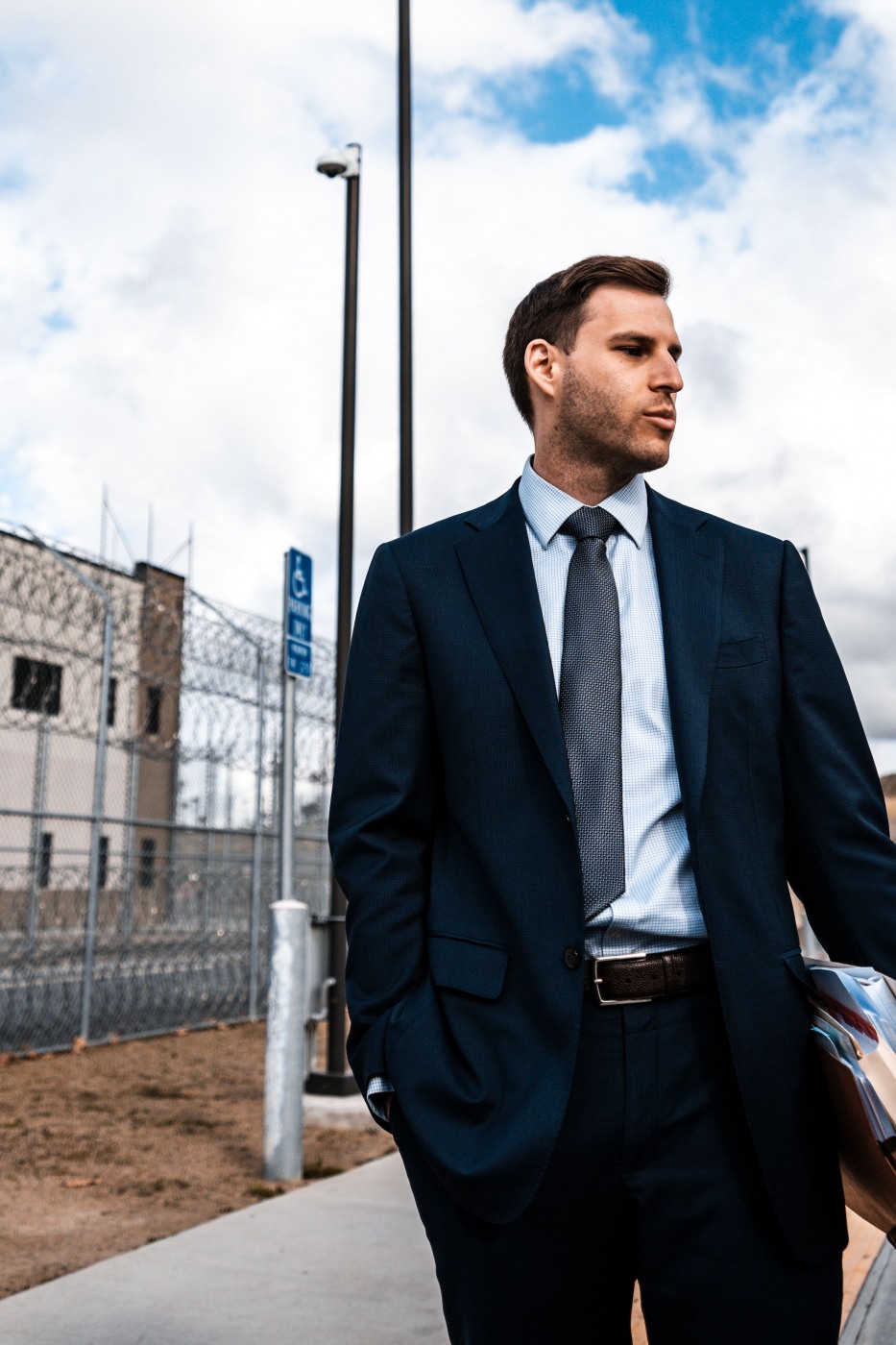
On the U.S. side of the border, students visited sites that captured San Diego County's diverse communities and, in some cases, the tensions that exist between them. Guided by Hector Peralta, the course’s San Diego coordinator and a Class of 2016 graduate of Brown, students visited the grounds of the Otay Mesa Detention Center, a privately operated U.S. detention facility, and explored El Cajon, a nearby city with a flourishing Iraqi community.
They also visited the Viejas Reservation, one of 11 U.S. reservations home to members of the Kumeyaay Nation, the area's indigenous Native American community, whose members splintered across the U.S. and Mexico when the Treaty of Guadalupe Hidalgo created the current border in 1848.
"The students really appreciated being able to see that the indigenous community of San Diego is one that is very much still here, very much thriving, and very much a part of San Diego’s politics and economy," Peralta said.
In Mexico, the students were joined by cultural studies scholars from Colegio de la Frontera Norte in Tijuana, and a faculty member from the Universidad Autónomia de Baja California’s Mexicali campus. Together, they visited the Playas de Tijuana side of Friendship Park — a mural-covered stretch of the border wall that includes a gate, painted with the word "amor," that border patrol agents would occasionally open from 2013 to 2018 to allow separated families brief opportunities to meet.
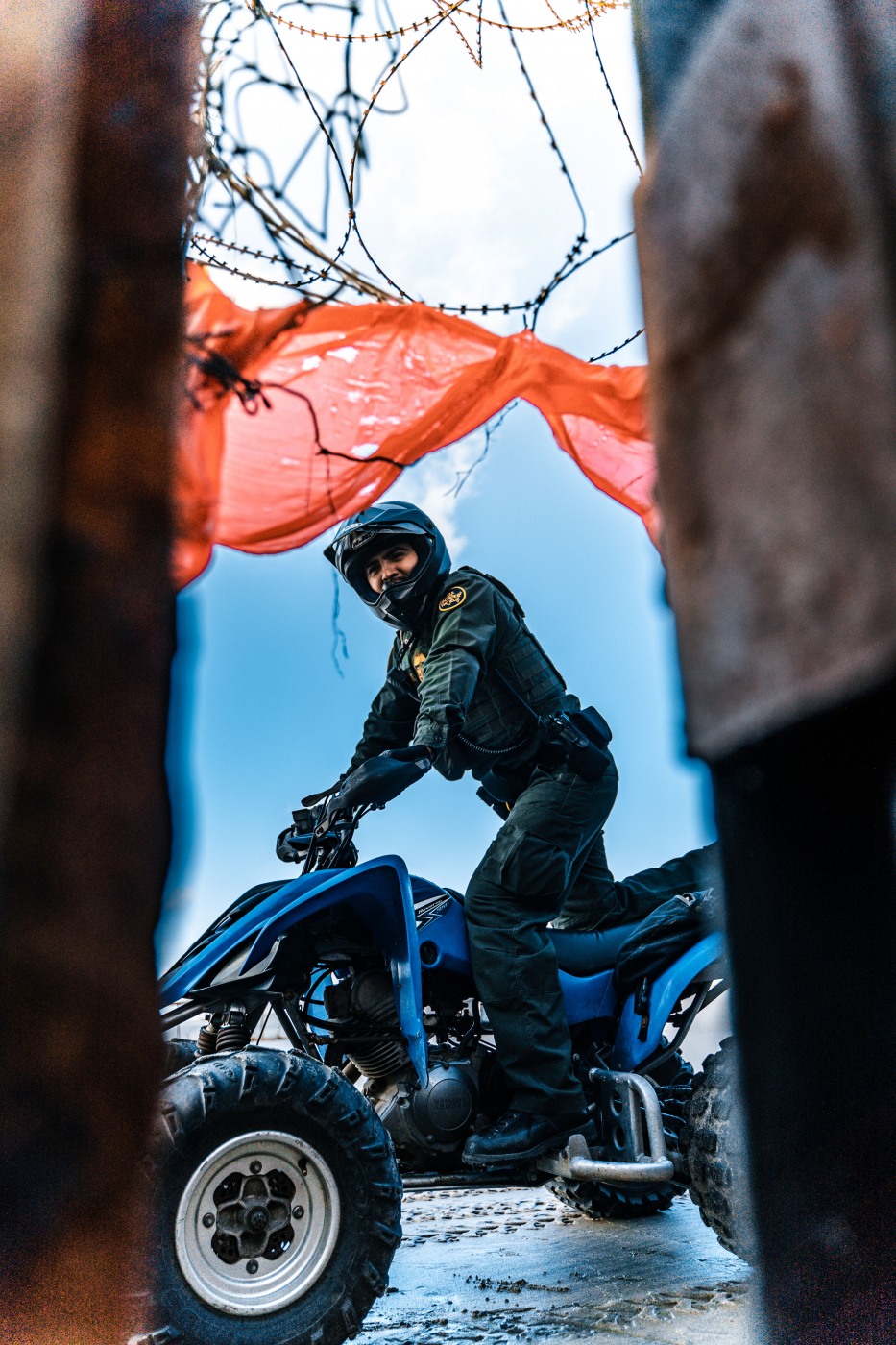
The students also explored communities that highlighted for them the tangled interdependencies that the border has created between the U.S. and Mexico. In Tijuana, the students visited maquiladoras, factories where Mexican workers manufacture goods for export, often to the U.S. According to Hu-DeHart, employees of maquiladoras in the borderlands work up to 60 hours a week, earning about $2 an hour.
For Brown sophomore Jaylim Aboneaaj, visiting the maquiladoras illustrated the "asymmetrical power relationship" between the U.S. and Mexico.
"We could see the suffering that is necessary for our society to function," he said.
And yet, as Pottinger notes, these foreign-run factories "are one of the most stable forms of work now available in region." Because the maquiladoras have become integral to the economy of many border cities, she said, "there needs to be a broader cultural conversation about how we uphold human rights in these factories. Those of us lucky enough to visit them without fear need to speak up on these issues."
And equipping students with the firsthand understanding so critical to speaking up was precisely a goal of the course, Hu-DeHart and the students said. For the course’s final project, each participant will work to ignite conversation about the U.S.-Mexican border within their home communities by developing an op-ed for their hometown newspapers. For Cho, the opportunity to start this conversation is one the course’s most valuable features.
"The course aims not just to teach students here, but for us to share our stories with people at home," she said. "As someone coming from Missouri, a place far from the border, I feel it’s extremely important that this sort of exchange occurs."
A first-year seminar, reimagined
This is not the first year that Hu-DeHart has taught an ethnic studies course by this name. Since 2013, the U.S.-Mexico Border and Borderlands has been offered four times as a bilingual first-year seminar taught on campus over the course of a full semester.
But increased political and media interest in the U.S.-Mexico border — coupled with the 2017 introduction of Wintersession, a condensed winter break term that lends itself to destination coursework — made Hu-DeHart decide it was a time for a new approach to her popular seminar, she said.
"This particular subject was so much in the news, with so much misinformation and distortion surrounding it, that I thought, why don’t we find out what the border is like for ourselves," she said. She also opened the course to students who do not speak both Spanish and English.
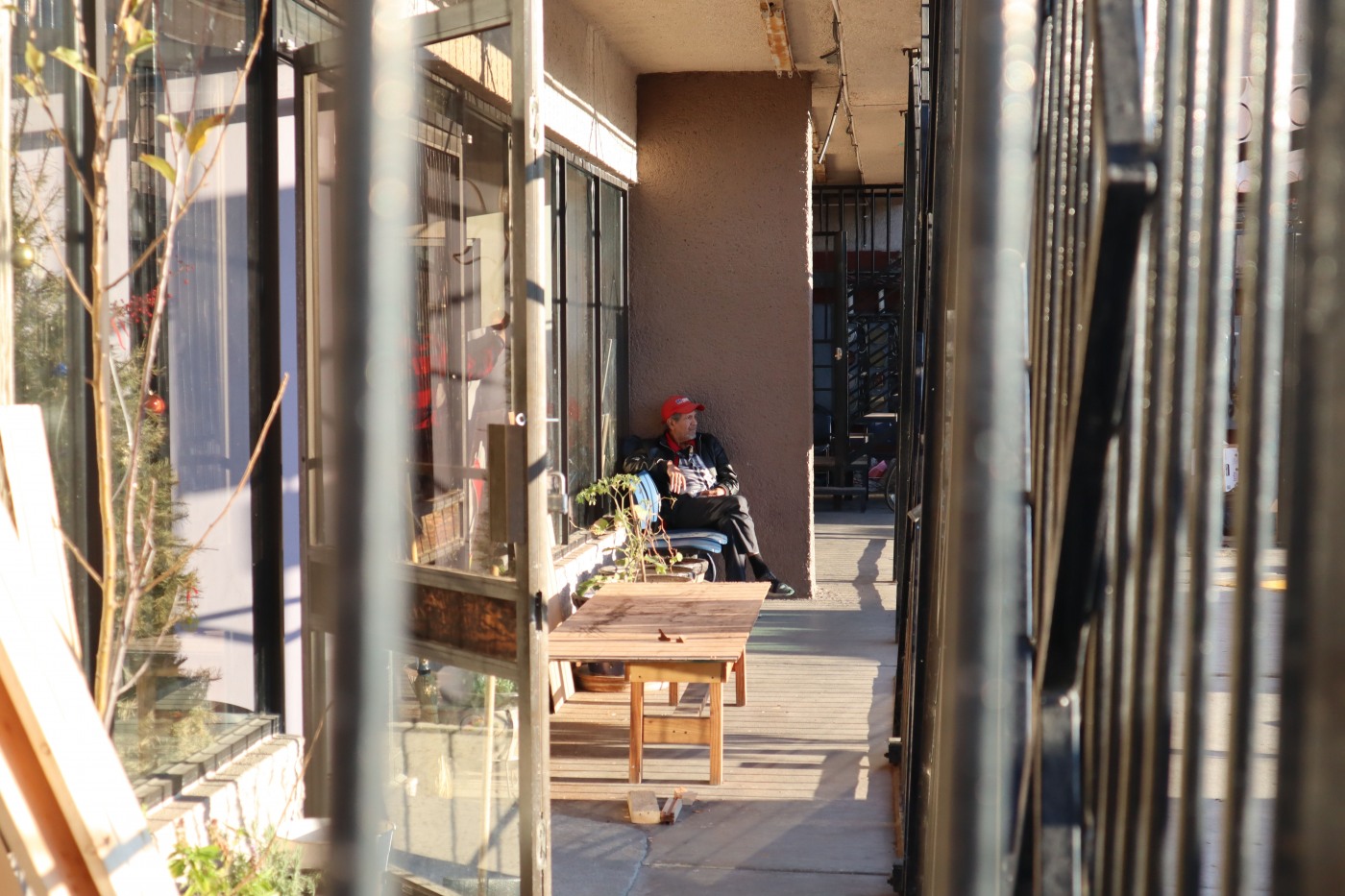
Planning for the Wintersession course began in 2018. With support from a Brown course development grant, Hu-DeHart traveled to the western corner of the border, where she joined forces with Peralta. Together, they secured partnerships with the universities in Tijuana and Mexicali.
As a native of the U.S.-Mexico borderlands now studying the region as a doctoral candidate in Yale’s American Studies program, Peralta also used his own relationships with community organizations in San Diego to plan the three days that students spent on the U.S. side of the border. Their course proposal earned the 2019-20 Lea E. Williams GELT Award, which defrays students’ travel-related costs for destination courses.
For Peralta, who took the semester-long version of Hu-DeHart's course as a first-year student, the opportunity to re-envision one of his first courses at Brown alongside a valued mentor has been one of the best experiences of his life, he said.
"I was the first person in my family to go to college," Peralta said. "So not only being able to say that I’m a Ph.D. student at Yale but also being able to say that I’m actually helping out one of my former professors at Brown by continuing this work alongside her — coming full circle like this means so much to me."
With the course culminating in the students’ late January return to Providence, Hu-DeHart hopes that students will find the experience on the border and the new perspectives it offered equally meaningful.
"We don’t want students to learn just from a U.S.-based professor," Hu-DeHart said. "We want them to see both sides."